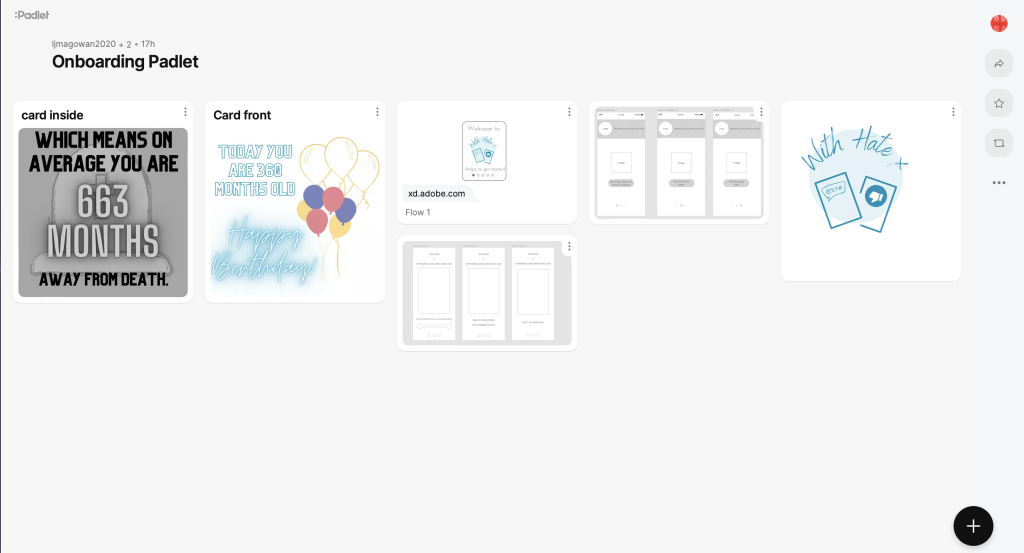Introduction
The brief for this group project was to design an onboarding sequence in our sketchbooks for a greeting card business. We were given a timeframe outlined by the steps below.
Step 1 – Brain-shower concepts (10 minutes).
Step 2 – Decide on the best concept (3 minutes).
Step 3 – Agree on the target audience (2 minutes).
Step 4 – Work individually on an onboarding draft (sketchbook) (45 minutes).
Step 5 – Compile the best ideas into one idea.
Step 6.- Present to the class.

Group Reflection
I formed a group with Abbie and Lucy and we first brain showered as many unique greeting card ideas as possible to ensure we had enough concepts to choose from as a group. It became apparent early in the brain-showering task that Abbie should take the lead position as creative director as she had the most original and interesting ideas. Moreover, the concept we decided to develop further was the offensive greetings card business originally thought of by Abbie; this concept had the most potential when discussing the types of cards the business would have on offer. Such as death countdowns and rewards for being the most unreasonable you can be, distinguished as the Karen awards range. We also found a strong link with the unusual milestones cards as a comedic addon to the range.
After deciding on the niche, we began to think of a suitable target audience. We concluded after much contemplation that the card ranges would be suitable for all ages, excluding young children. Moreover, as a group, we imagined people sending these cards to friends and family as a practical joke for birthdays and other occasions with the option of sending them completely anonymously to add to the whole ‘mean’ experience.
After developing our concept and discussing target audiences and branding, we separately started developing potential onboarding sequences for the business’s website/app in our sketchbooks. When designing our onboarding sequences, we halted production as we struggled to think of original ideas. After discussing our own setbacks, we all chipped in and helped each other come up with a simple but effective idea.
Furthermore, we compiled our best ideas and developed a mock-up of each onboarding sequence on XD; this solidified our ideas.
Individual Design Development
I quickly designed a mock-up of my onboarding sequence in my sketchbook before using XD to create a more defined version of the mock-up. My contribution focused on introducing the website/app to the user with a clear approach. The first onboarding screen makes use of an interactive slider which the user can slide across declaring how horrible they think they are. Once they have set how horrible they are using the slider the website would recommend cards based on their confession. The second screen guarantees the user understands that the cards may be offensive. The final screen encourages them to be as mean as possible to add to the overall experience.



Padlet link: https://padlet.com/ljmagowan2020/k398449umhasstfc
Conclusion
In conclusion, regarding the group mechanics, I feel we worked well together when coming up with a range of ideas. We all had an equal voice and having a creative director solidified our relationships and how we communicated. Moreover, next time I feel we should concentrate on coming up with more volume when discussing original onboarding strategies to give our group even more depth when designing.